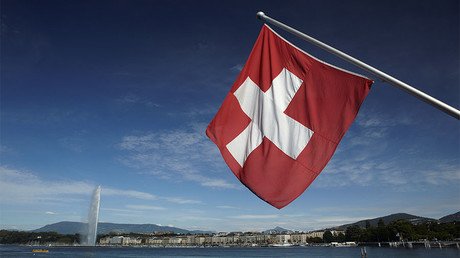Can India really shut down oil supply to China?
Threats to oil shipping routes are nothing new to the oil market. It has endured Iran seizing tankers in the Strait of Hormuz, and it has endured Iran's repeated threats to close this most important chokepoint in the world.
But what the oil market is perhaps not prepared to shrug off are similar threats made by one of the world's largest oil consumers--India--to choke off the oil that is making its way to China.
China's oil imports continue to give support to the muted oil rally.
Now, the recent hostility that erupted between two of the world's biggest oil importers – the two largest in Asia, China and India – could increase security threats along the second most important oil chokepoint in the world, the Strait of Malacca.
This vital strait connects the Indian Ocean with the Pacific Ocean through the South China Sea and is the shortest oil shipping route from oil suppliers in the Middle East to the Asian markets such as China, Japan, and South Korea. The Strait of Malacca is the primary chokepoint in Asia, and in recent years, between 85 percent and 90 percent of annual total petroleum flows of more than 16 million barrels per day (bpd) through this chokepoint were crude oil, according to the US Energy Information Administration.
Also on rt.com Russia surpasses Saudi Arabia as China’s top supplier of crudeThe relationship between India and China has always been shaky, but a recent flare-up of tensions on the border between the two became the most violent in 50 years, since China and India fought a war to establish where precisely this border would pass. Both countries are nuclear powers, which has worried the UN, who has called on Beijing and New Delhi to "exercise maximum restraint."
Over the past few days, the two counties seem to move toward de-escalation, but the tension remains.
Could India Cut Off Shipments Through The Strait of Malacca?
India's position in the Indian Ocean and its Navy strengthening the presence in the Andaman and Nicobar Islands, which are very close to the Strait of Malacca, could theoretically allow India to cut off the narrow strait between Indonesia and Malaysia, H I Sutton, an expert on navies, writes in Forbes. A potential closure of the Strait of Malacca in case of an escalation of tension, a crisis, or a war, could allow India to choke oil shipments to China, the world's largest oil importer, which imports a lot of oil from the Middle East going through that route.
The India-China standoff has already reverberated to other trade areas, with Chinese imports suddenly held up at Indian ports for scrutiny without warning, trade organizations told CNN Business at the end of last month.
Also on rt.com India blocks imports of US products made in China following deadly border clashBut a blockade of the Strait of Malacca is, as of now, a distant possibility. If it were to cut off shipments, India would choke the oil flows to north Asian powers allies of the United States, such as South Korea. It would also severely damage trade in all of Asia, including its own trade flows at a time when the coronavirus crisis is ravaging economies around the world.
China's Plans To Bypass The Strait Of Malacca
China does have two projects to reduce its dependence on the Strait of Malacca in trade, including oil trade. One is the Gwadar port in India's neighbor Pakistan under the 'Belt and Road Initiative' with plans to transport oil from the port to inland China. The other is the Northern Sea Route in the Arctic. China aims to build a ""Polar Silk Road", and facilitate connectivity and sustainable economic and social development of the Arctic," according to China's Arctic Policy plan from 2018.
These plans will take years to complete, and even when complete, they would not eliminate China's dependence on the Strait of Malacca for its oil trade.
China's Oil Imports Continue To Soar
Meanwhile, crude oil imports have been a key support factor for oil prices during the COVID-19 pandemic. Chinese imports held relatively steady in March and April, helping the otherwise crumbling global oil demand when other countries went on lockdown. Then in May, China imported a record-high 11.34 million bpd of crude oil. While part of the record imports was driven by economic activity picking up, the other driver was April's ultra-low oil prices, which incentivized Chinese crude oil stockpiling in strategic and commercial inventories.
A disruption to the flow of oil to China could translate into a disruption in oil's recovery.
Also on rt.com China’s crude oil imports rebound to near record highIn June, China's crude oil imports hit a record high of 11.93 million bpd—an increase of 820,000 bpd from May levels, which were also at record levels, a market analysis by OilX Research showed. OilX attributed this increase in June to the restart of China's economy, along with favorable crude oil prices and spreads.
With oil storage capacity in China reportedly running thin, it's not clear how much oil the world's largest oil importer will be purchasing for delivery in the coming months, especially now that prices are double the lows seen in April.
A potential disruption to oil flows through Malacca could send oil prices soaring, and distorting – once again – the fundamentals behind oil prices and delaying the recovery in global oil demand after the COVID-19 crisis.
This article was originally published on Oilprice.com














